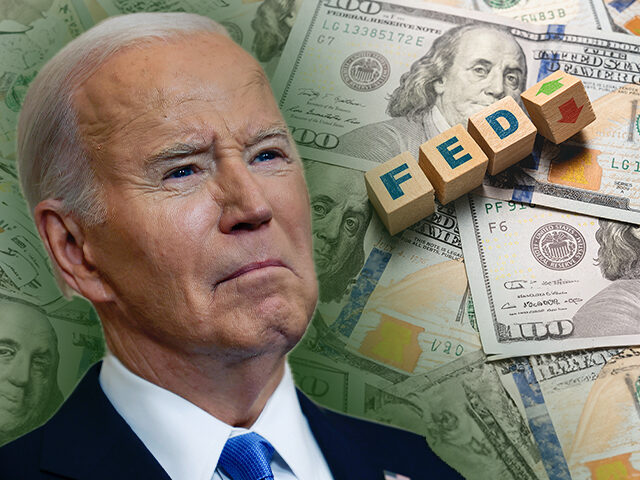Consumer Spending Is Smothering Rate Cut Hopes
The idea that the Federal Reserve might pare back rates this year is becoming increasingly threadbare, a testament more to wishful thinking than to any discernible reality.
The Bureau of Economic Analysis said this week that nominal personal income rose 0.3 percent in February from the prior month. Spending surged a vigorous 0.8 percent month-on-month. Even after adjusting for inflation, real spending rose 0.3 percent, laying to rest any lingering apprehensions regarding a potential retail malaise seeping into the broader contours of consumer expenditure.
On the ledger of expenditures, goods found a prop in the revitalized auto sales sector, while other categories exhibited enough vitality to support the idea that the rotation out of goods spending has likely come to an end.
Services spending saw a noteworthy ascension of 0.6 percent month-on-month, a climb all the more remarkable given the pronounced dip in utilities—a testament, perhaps, to the breadth and depth of the strength of the household sector. This services surge, broad-based and undeniable, can be seen in person by anyone showing up to eat at a restaurant, schedule an appoint for a doctor or even a haircut, or take a flight out of a major U.S. airport.
The saving rate, for its part, contracted to 3.6 percent from a January figure revised upwards to 4.1 percent. The direction of the saving rate indicates a buoyancy in consumer expectations about employment and wages. Americans may not be happy about the state of the economy or the Biden administration’s leadership, but they are not hunkering down in fear of tough times ahead. As we have observed before, it’s very likely that the prospect of the upcoming election throwing the Biden bums out may be encouraging a rise in consumer confidence.
Work Lots, Earn Lots, Spend Lots
The confidence of Americans in the ongoing strength of the labor market is supported by the labor market data received this week. February’s gentle nudge upward in job openings, from 8.75 million to a slightly loftier 8.76 million, might at first glance seem a whisper in the cacophony of economic indicators. But when taken in the context of the massive growth of payrolls in recent months—an average of 265,000 per month in the three months through February—this is a testament to the unwavering demand of employers for more and more workers.
The ADP jobs figures released Wednesday bolster the idea that the labor market remains on solid footing. Private sector payrolls grew by 184,000 in March, much stronger than the 150,000 expected. Crucially, the growth was widespread, with all but one of the ten categories of businesses tracked by ADP showing payroll growth. Wage growth remains strong, especially among workers who have switched jobs. They’ve seen wages climb by 10.0 percent year-over-year, suggesting that employers are bidding up wages to lure workers away from their existing positions.
Interest rates may be playing an unexpected role in pushing up wages. It’s been widely noted that high mortgage rates have had a “lock-in” effect on homeowners who are reluctant to give up their current mortgages with lower rates. This likely means that employers who are seeking to convince workers to move for jobs have to offer even more generous salaries because the potential employees are facing a higher cost of living. This reluctance to move due to the interest rate lock-in effect could also explain why the quits rate has plateaued at 2.2 percent for months.
Bostic Says No Cut Till After Election Day
Raphael Bostic, the president of the Federal Reserve Bank of Atlanta, said on Wednesday that he doesn’t anticipate conditions will warrant a Fed rate cut until the fourth quarter of this year. There are only two meetings in the fourth quarter, one in November and one in December. The November meeting concludes the day after election day. That would be a convenient time for the Fed to cut if it were seeking to avoid charges of election interference.

Federal Reserve Bank of Atlanta President Raphael Bostic, speaks during an interview in Atlanta, Georgia, on Nov. 3, 2023. (Elijah Nouvelage/Bloomberg via Getty Images)
Bostic has likely seen what has happened to the Atlanta Fed’s “sticky price” inflation measure. The three-month average annualized gain is now at five percent, the highest since April of 2023. That suggests a very strong undercurrent of inflationary pressures that are unlikely to subside in a meaningful way in the near future. The trend has gone in the wrong direction, indicating more inflation persistence and therefore a need to keep rates higher.
Fed Chairman Jerome Powell was a bit more circumspect in his speech on Wednesday, saying it was too soon to tell whether the inflation numbers in January and February were “more than a bump.” The best way of reading that, however, is as an indication that the Fed is going to need significantly softer numbers going forward if it is going to cut. If you expect inflation to remain resilient—as we do—you should also expect Fed cuts to remain on hold.
In the economic seas we’re currently navigating, where consumer spending and labor market strength defy the gloomier forecasts, the idea of a Fed rate cut is starting to look like a theoretical exercise detached from the practical realities on the ground—a classic case of economic wishful thinking meeting the hard wall of data.

COMMENTS
Please let us know if you're having issues with commenting.